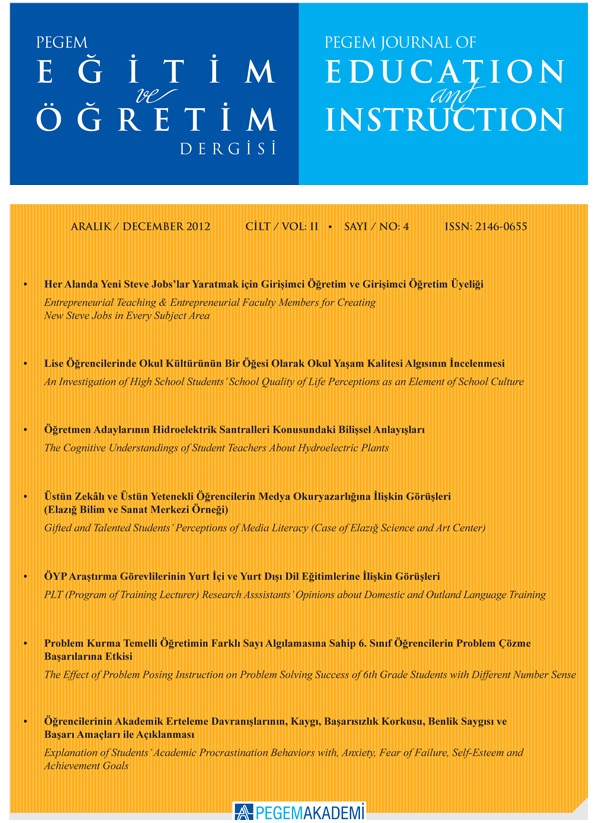An investigation of high school students' school quality of life perceptions as an element of school culture
DOI:
https://doi.org/10.14527/C2S4M2Abstract
This study aims to investigate regular and vocational high school students' perceptions of school quality of life. In line with this purpose, the questions that guided the study are "Are there any significant relationships between the sub-dimensions of school quality of life perceptions (teachers, positive feelings about school, status, school authorities, negative feelings about school, students and social activities)?", "Do the perceptions of students about school quality life differ depending on the factors such as school type, gender, grade level, and parents' education level?", and "Are there any significant relationships among sub-dimensions of school quality of life perceptions (teachers, positive feelings about school, status, school authorities, negative feelings about school, students, and social activities) of 9th, 10th, and 11th grade students?". The study was conducted as a descriptive study making use of survey method. The participants are 358 randomly selected students from three schools randomly selected among regular, vocational, and Science and Anatolian high schools located in Kars city centre. The participants' perceptions of school quality of life were identified through Scale for Measuring Quality of Life in High Schools (LISEYKO) which was revised by Sarı (2011). Cronbach-Alpha internal consistency coefficient of the original scale is .86 while that of used in the present study was found .70. The data were analysed using factor analysis, numbers, percentages, arithmetic mean scores, t-test for independent groups, one-way analysis of variance, and correlation analysis.The results indicate that there is not any significant relationship between gender and the sub-dimensions of the school quality of life scale, and between the type of high school and positive feelings about school, status, negative feelings about school, students, social activities, and total sub-dimension scores. There is a significant difference between the grade levels and the sub-dimensions of quality of school life scale in relation to teachers, positive feelings about school, negative feelings about school and total scores in favor of the 12th graders. While mothers' education level reveals significant difference in terms of teachers, school authorities, social activities, and total scores the other subdimensions indicate no difference. Similarly, fathers' education level demonstrates significant difference in teachers and students sub-dimensions, but not in the other subdimensions. There is not any statistical difference between the teacher sub-dimension and school authorities, status and between the student sub-dimension and negative feelings towards school and total scores. However, there are statistically significant relationships in the other sub-dimensions of the scale.
Downloads
Downloads
Published
How to Cite
Issue
Section
License
Attribution — You must give appropriate credit, provide a link to the license, and indicate if changes were made. You may do so in any reasonable manner, but not in any way that suggests the licensor endorses you or your use.
NonCommercial — You may not use the material for commercial purposes.
No additional restrictions — You may not apply legal terms or technological measures that legally restrict others from doing anything the license permits.




